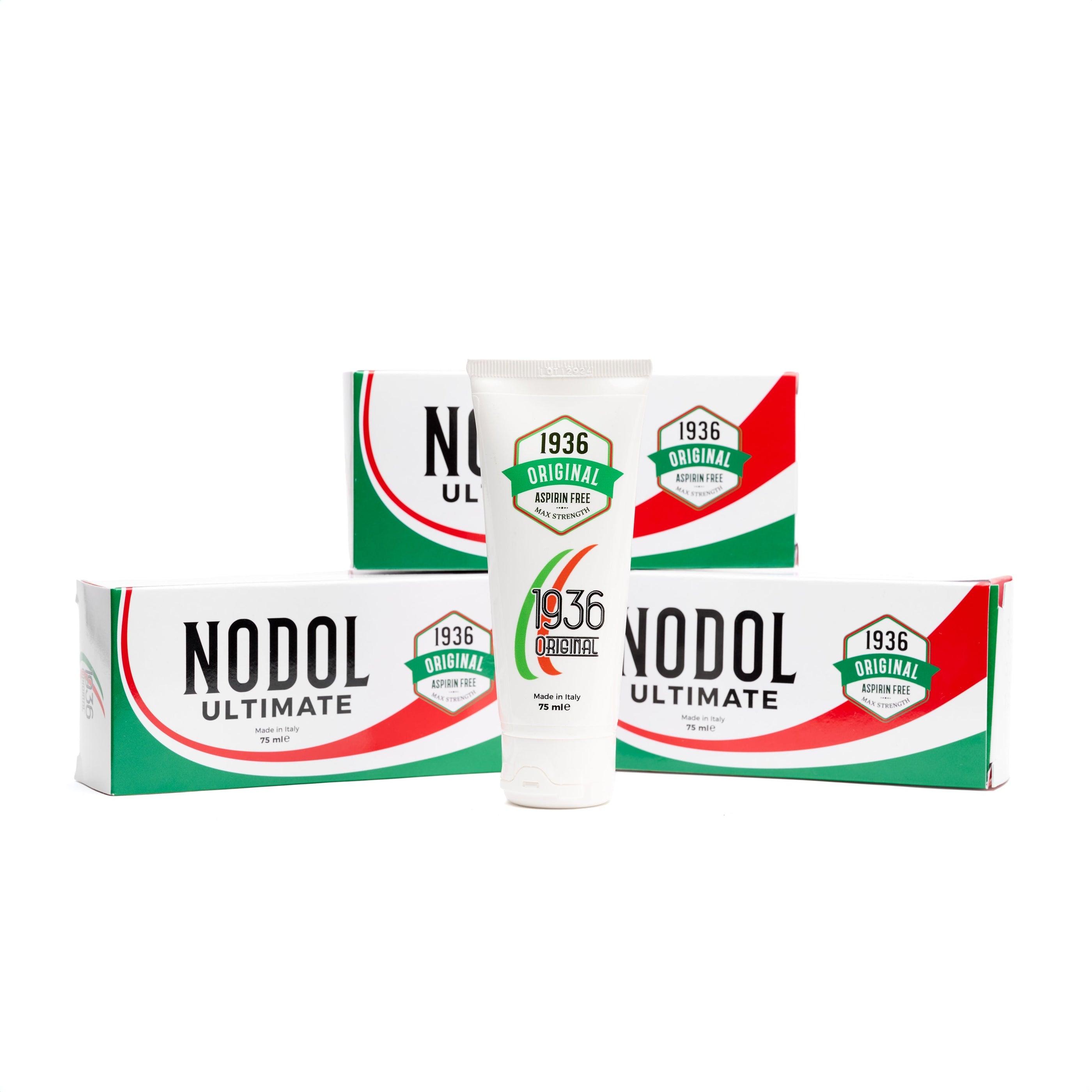The Best Pain Relief Products for Chronic Pain Sufferers

Introduction
Chronic pain is a condition that affects millions of people and can greatly impact daily life. It often limits physical activity and reduces overall quality of life. Whether it's back pain or another type of ongoing discomfort, finding the right relief is crucial for managing these challenges. Effective pain relief products are essential in reducing symptoms and allowing individuals to maintain a sense of normalcy.
When it comes to managing back pain, choosing the best pain relief product can greatly improve overall well-being. There are various treatments available, including medications and non-drug approaches, so it's important to understand your options.
We have extensively researched and compiled a list of the top pain relief products on the market today. This guide aims to help chronic pain sufferers find effective solutions that are tailored to their specific needs, providing much-needed relief from their daily struggles.
Understanding Chronic Pain
Chronic pain, often defined as pain persisting longer than 12 weeks despite medication or treatment, is a complex condition affecting millions worldwide. Unlike acute pain, which signals injury and subsides with healing, chronic pain can persist long after recovery, becoming a debilitating part of life.
Common Causes of Chronic Pain:
- Injuries: Past injuries, even those treated effectively, can lead to lingering pain.
- Underlying Medical Conditions: Conditions such as arthritis, fibromyalgia, and nerve damage are frequent culprits.
- Surgical Procedures: Post-surgical pain can develop into chronic conditions if not managed appropriately.
Effects on Physical and Mental Well-being:
Chronic pain significantly impacts daily life:
- Physical Health: It often leads to decreased mobility and physical fitness, causing a cycle of worsening health issues.
- Mental Health: Persistent discomfort can trigger anxiety and depression, exacerbating the experience of pain.
- Sleep Disturbances: The relentless nature of chronic pain frequently disrupts sleep patterns, leading to fatigue and reduced quality of life.
Understanding these aspects underscores the importance of effective management strategies for those living with chronic conditions.
Types of Pain Relief Medications for Back Pain Management
1. Analgesics (e.g., Paracetamol)
Analgesics are among the most common medications prescribed to alleviate back pain. Paracetamol, often recognized as one of the go-to analgesics, is widely utilized due to its availability and ease of use. Its appeal lies in being an over-the-counter medication that many reach for at the first sign of discomfort.
In terms of effectiveness, studies have shown mixed results. Notably, research published in 2016 revealed that paracetamol might not be significantly more effective than a placebo when it comes to managing back pain. This finding suggests that while paracetamol remains a popular choice, its actual impact on pain relief may be limited for some individuals.
When considering the use of paracetamol or other analgesics, it's important to weigh branded versus generic options. Branded products can often carry a higher price tag without offering additional benefits over their generic counterparts. Both typically contain the same active ingredients, making generic options a cost-effective choice without compromising efficacy.
The question "What is the best pain relief product?" often arises in discussions about back pain management. The answer isn't straightforward, as individual responses to analgesics like paracetamol vary greatly. Some may find significant relief, while others might experience minimal benefit. It's crucial to recognize that there is no one-size-fits-all solution; what works best can depend on personal experiences and specific health conditions.
In summary, while analgesics such as paracetamol are commonly prescribed and easily accessible, their effectiveness can be debated based on recent studies. As you consider your options, keep in mind the potential cost savings of choosing generic over branded medications, and remember that personal experimentation may be necessary to find what truly works best for you.
2. Non-Steroidal Anti-Inflammatory Drugs (NSAIDs) (e.g., Ibuprofen)
Non-Steroidal Anti-Inflammatory Drugs (NSAIDs), such as ibuprofen, are important for managing back pain because they target inflammation, which is a common cause of discomfort. These medications work by blocking enzymes that produce inflammatory compounds in the body, reducing swelling and relieving pain.
During acute episodes of back pain, NSAIDs are often recommended because they effectively address the initial inflammatory response. It's important to carefully follow dosage instructions and only use them as needed for short-term relief.
However, there are potential side effects to consider with prolonged NSAID use:
- Gastrointestinal issues like ulcers or bleeding
- Increased risk of cardiovascular problems
- Kidney damage
To minimize these risks, it's advisable to use NSAIDs cautiously and under medical supervision, especially if taken over extended periods. Always consult with a healthcare provider to ensure safe usage tailored to your individual needs.
3. Antidepressants (e.g., Amitriptyline)
Antidepressants, such as Amitriptyline, are often used to treat chronic pain, even though their main purpose is to stabilize mood. These medications can be particularly helpful for people with back pain, as they not only help reduce discomfort but also improve sleep problems commonly associated with chronic pain.
How Amitriptyline Works
Amitriptyline works by changing the levels of certain chemicals in the brain, which can help decrease the perception of pain.
Dosage Recommendations
Typically prescribed in low doses ranging from 5 to 10 milligrams, amitriptyline is given to minimize side effects while providing pain relief and improving sleep quality.
Patient Experiences
Many patients find relief with amitriptyline, although its effectiveness can vary. Some report significant improvements in pain and sleep, while others may not notice any benefits.
The use of antidepressants along with other medications like analgesics and NSAIDs offers a comprehensive approach to managing chronic back pain.
4. Anti-Epileptics (e.g., Gabapentin)
Anti-epileptic drugs such as gabapentin and pregabalin are increasingly used for managing persistent pain, especially nerve-related discomfort. Initially developed to control seizures, these medications have found a new role in chronic pain management, particularly for conditions like neuropathic pain.
How They Work:
- These drugs work by stabilizing electrical activity in the brain and affecting neurotransmitter release.
- In the context of nerve pain, gabapentin and pregabalin modulate the transmission of pain signals, providing relief by reducing the sensitivity of nerves.
Patients often inquire about "what is the best pain relief product" when seeking solutions for back pain. While analgesics, non-steroidal anti-inflammatory drugs (NSAIDs), and antidepressants are common options, anti-epileptics offer a distinct approach by targeting specific neurological pathways.
Despite their effectiveness, these medications should be considered carefully due to potential side effects and their primary indication as seizure treatments. As with any medication regimen, consulting with a healthcare provider is crucial to determine suitability based on individual health profiles.
5. Opioids (e.g., Codeine)
For immediate pain relief, opioids such as codeine, tramadol, and morphine are often prescribed. These powerful medications are known for their quick effectiveness in relieving severe back pain episodes. However, they work by attaching to specific receptors in the brain, changing how pain is perceived and how emotions respond to it.
While they can be effective, opioids come with significant risks:
- Dependency: There is a high risk of becoming dependent on them because they are addictive. Patients often find they need larger doses over time as their bodies get used to the drug.
- Opioid-Induced Hyperalgesia: This condition can happen when long-term use of opioids actually makes someone more sensitive to pain. This effect is opposite of what these medications are supposed to do.
These risks highlight the need for careful use and regular check-ins with healthcare providers when thinking about using opioids for chronic back pain management.
Non-Medication Strategies for Comprehensive Pain Management
Exploring alternative therapies can be a game-changer for those seeking relief beyond medication. Physical therapy is often recommended to enhance mobility and strengthen muscles, providing structural support to alleviate back pain. Techniques such as acupuncture tap into ancient wisdom, using fine needles to stimulate specific points on the body, potentially reducing pain perception.
Mindfulness techniques also offer substantial benefits. Practices like meditation and breathing exercises help manage stress and improve mental well-being, crucial for those dealing with chronic discomfort.
Lifestyle Changes
Lifestyle changes play a pivotal role in pain management:
- Regular Exercise: Engaging in low-impact activities such as walking or swimming can maintain flexibility and strength without overstraining your back.
- Healthy Weight Maintenance: Carrying excess weight puts additional pressure on the spine; maintaining a balanced diet aids in weight management.
- Good Posture: Keeping a neutral spine position reduces undue stress, especially important for those with desk jobs or extended sitting periods.
These non-pharmaceutical approaches are integral to a holistic pain management plan, offering diverse avenues for relief while promoting overall health.
When to Seek Professional Help with Your Pain Management Plan?
Engaging with a healthcare provider for a medication review is crucial, especially if you've been on prescribed pain relief medications like analgesics, NSAIDs, or opioids for six weeks or more without significant improvement. During this period, your body might not respond as expected to the current regimen, indicating a need for reassessment.
- Regular Medication Review: Ensure that after prolonged use of any pain relief product without noticeable benefits, you consult your doctor. This step helps in evaluating whether the medication is effective or if adjustments are necessary.
- Consultation for Alternatives: If your current treatment isn't yielding desired results, discussing alternative treatments with your healthcare provider is advisable. Exploring other options can sometimes lead to discovering what the best pain relief product might be for your specific condition.
This proactive approach ensures that your pain management plan remains effective and tailored to your evolving needs.
Conclusion: Taking Control of Your Chronic Pain Journey
Adopting a holistic approach is key to effective pain management strategies. It's crucial to integrate both medication and non-medication methods, tailoring them to your individual needs. This might include a combination of analgesics, NSAIDs, or other prescribed medications with alternative therapies like physical therapy or mindfulness practices.
Exploring all available options empowers you to find the best pain relief product for your chronic condition. Whether you're considering medication or lifestyle changes, seeking professional advice ensures your choices are safe and effective.
Remain proactive in your journey, stay informed about new treatments, and don't hesitate to adjust your regimen in consultation with healthcare professionals. By doing so, you can enhance your quality of life and manage chronic pain more effectively.
FAQs (Frequently Asked Questions)
What is chronic pain?
Chronic pain is defined as pain that persists longer than 1 month and affects millions of people. It can stem from various causes and significantly impacts daily life.
What are common causes of chronic pain?
Common causes of chronic pain include past injuries, even those that have been treated effectively, as well as conditions such as arthritis, fibromyalgia, and neuropathy.
What types of medications are used for back pain management?
Types of pain relief medications for back pain management include analgesics (e.g., Paracetamol), Non-Steroidal Anti-Inflammatory Drugs (NSAIDs) like Ibuprofen, antidepressants such as Amitriptyline, anti-epileptics like Gabapentin, and opioids such as Codeine.
How does Amitriptyline work for pain relief?
Amitriptyline works by altering the levels of certain chemicals in the brain that affect mood and pain perception. It is typically prescribed in low doses ranging from 5 to 10 milligrams.
What non-medication strategies can help manage chronic pain?
Non-medication strategies for comprehensive pain management include exploring alternative therapies such as physical therapy, acupuncture, mindfulness practices, and making lifestyle changes like regular exercise and stress management.
When should I seek professional help for my chronic pain?
You should engage with a healthcare provider for a medication review or if your pain persists despite treatment, worsens over time, or significantly interferes with your daily activities.












